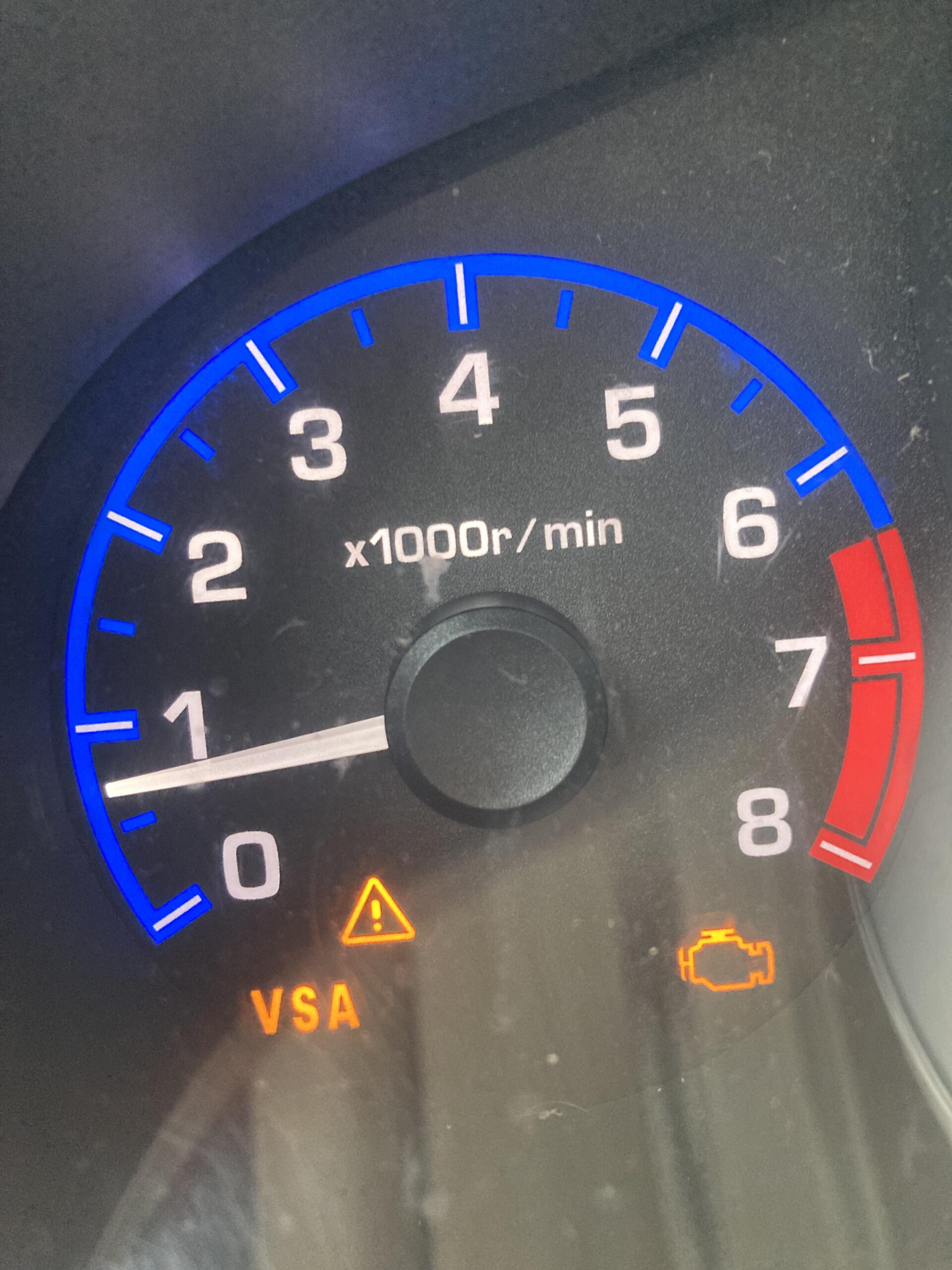Ever experienced the frustration when your car won’t move in drive but effortlessly glides in reverse?
It’s a real head-scratcher, right?
No need to get into fancy technical stuff or complicated diagnostics; let’s keep it straightforward.
We’re here to figure out why your car, usually your reliable buddy on the road, decides to act up.
Cars are supposed to be hassle-free, but when they start behaving strangely, it’s a bit of a puzzle.
So, why the reverse preference overdrive?
We’ll help you understand why your car won’t move in drive but will in reverse.
Stick around, and we’ll get those wheels rolling smoothly again.
Why My Car Won’t Move In Drive But Will In Reverse
In the event of a component failure or damage within the system, the automatic transmission, specifically, may only engage in reverse. Another potential issue could be linked to a malfunction in the speed sensor. Explore the various reasons that may impede your car from moving forward.
1: Slipping Car Clutch
If you find that your vehicle refuses to move in drive but operates smoothly in reverse, a potential culprit could be a slipping clutch. This phenomenon involves the intermittent engagement and disengagement of the engine, leading to inadequate power transfer to the wheels and, consequently, the vehicle’s immobility.
Signs of a Slipping Clutch
- Burning Odor when Starting the Engine
An unusual burning smell upon starting the engine can be indicative of a slipping clutch, signifying friction and wear.
- Squeaky, Rumbling Noises when Applying Pressure to the Pedals:
Audible irregularities such as squeaks or rumbles during pedal operation may suggest issues with the clutch mechanism.
- Vibrations in the Clutch Pedal
A vibrating clutch pedal is a tactile indicator of potential clutch slippage, highlighting irregularities in its function.
- Difficulty in Switching Gears
If you encounter challenges while shifting gears, it could be a consequence of a slipping clutch affecting the transmission process.
- Poor or Non-Existent Acceleration
A noticeable lack of acceleration, even when the throttle is engaged, may be a result of power loss due to a slipping clutch.
Possible Solution
If the slipping is a result of incorrect clutch placement, a potential solution involves adjustment to restore proper functionality. Adjusting the clutch can sometimes resolve the issue, allowing you to continue driving.
Caution and Long-Term Considerations
However, it’s essential to note that if a clutch begins to slip, replacing it is often the preferable course of action. Initial slips may escalate in frequency over time, generating more friction and causing increased damage to the vehicle. The longer a slipping clutch persists, the greater the risk of extensive harm.
Therefore, it is strongly recommended to consult with a qualified mechanic promptly when experiencing symptoms of a slipping clutch. Early intervention can help assess the extent of the issue and determine whether clutch replacement is necessary, preventing further damage to your vehicle.
2: Engine Control Unit (ECU) Issues
If your car refuses to move in drive but operates smoothly in reverse, one possible culprit could be a malfunctioning Engine Control Unit (ECU). The ECU, a compact device, plays a pivotal role in managing various functions within your vehicle.
Signs Of Engine Control Unit Malfunction
When the ECU malfunctions, it can generate inaccurate warnings, adversely affecting your car’s overall performance, particularly in drive mode. While ECU issues are relatively uncommon, they are not implausible, and several symptoms may manifest:
- Continuous Engine Light Illumination
A persistent illumination of the engine light is a potential indicator of ECU malfunction, signaling that the unit may be providing inaccurate information.
- Failure to Start
A faulty ECU may result in your car refusing to start, indicating a disruption in the critical processes controlled by the unit.
- Reduced Fuel Efficiency
ECU malfunctions can lead to inefficient fuel utilization, causing a noticeable decline in your vehicle’s fuel efficiency.
- Gear Shift Problems
Issues with gear shifting, such as delays or irregularities, may point to ECU dysfunction impacting the transmission system.
- Sudden Movements and Stops
An erratic driving experience characterized by abrupt movements or unexplained stops can be attributed to ECU-related performance issues.
Solutions
If you suspect a faulty ECU, it is crucial to take immediate action. Arrange for your vehicle to be towed to a reputable service and repair shop. Only technicians trained by the original equipment manufacturer (OEM) should handle ECU testing, diagnosis, and reprogramming.
Why Professional Assistance Matters?
Authorized OEM technicians possess the expertise and the proper tools required for accurate assessment and effective ECU reprogramming. Attempting to address ECU issues without specialized knowledge can risk exacerbating the problem or causing further damage to the software.
Contacting Your Dealer
Alternatively, reaching out to your vehicle’s dealer is a prudent step. Dealerships are equipped with advanced technology and experienced personnel specialized in handling ECU concerns. If your car is under warranty, the dealer can facilitate a smoother ECU replacement process, ensuring that your vehicle’s electronic control system is restored to optimal functionality. Don’t hesitate to leverage the support of professionals to address ECU-related issues and keep your vehicle running smoothly.
3: Incorrect Air/Fuel Ratio
Maintaining the proper air-fuel ratio within your vehicle’s engine cylinders is crucial for efficient combustion and the seamless operation of your vehicle. When confronted with issues where the car won’t move in drive or, worse, stalls in reverse, a potential culprit could be an incorrect air/fuel ratio.
Signs of an Imbalanced Ratio
- Reduced Fuel Efficiency
An imprecise air-fuel mixture can lead to reduced fuel efficiency, causing your vehicle to consume more fuel than necessary.
- Rough No-Load Operation
If the air-fuel ratio is skewed, you may experience a rough or uneven idle when the vehicle is stationary, indicating a potential imbalance.
- Reduced Engine Performance
Incorrect air-fuel ratios can hamper overall engine performance, leading to sluggish acceleration and compromised power.
Faults and Solutions
If the air filter and sensor are found to be faulty, the engine may not receive sufficient air, resulting in inefficiency and performance issues. To address this:
- Ignition and Inspection
Start the engine and conduct a visual inspection. Locate the air filter unit within the engine.
- Air-Fuel Mixture Adjustment
Identify the flat-tipped yellow brass path on the carburetor, representing the air-fuel mixture. Rotate it clockwise until you hear a light sound. This adjustment enhances the air-fuel mixture, optimizing engine performance.
- Control Combination Calibration
Set the control combination between chart and uneven audio positions. Adjust in either direction to achieve the smoothest no-load speeds, ensuring a balanced air-fuel ratio.
Seeking Professional Assistance
While the described adjustments can be helpful, it’s essential to note that handling intricate engine components requires precision. If the issue persists or if you’re uncomfortable performing these adjustments, it is advisable to seek professional assistance.
Qualified technicians can conduct a comprehensive inspection, diagnose any underlying issues with the air-fuel ratio, and implement precise adjustments or replacements as necessary. Taking proactive measures ensures that your vehicle maintains an optimal air-fuel ratio, promoting smooth operation and preventing performance-related setbacks.
4: Faulty Speed Sensor
It might seem surprising that a seemingly straightforward component like a speed sensor can have a profound impact on your car’s transmission system. The speed sensor plays a crucial role by supplying essential information about the vehicle’s speed to the Engine Control Unit (ECU), influencing the smooth shifting of gears.
Roles of Speed Sensor
The speed sensor’s task is to precisely measure the speed of the vehicle and transmit this data to the ECU. This information is pivotal in coordinating the optimal timing for gear shifts during acceleration and deceleration. However, when the speed sensor malfunctions, it can disrupt this crucial communication, leading to unexpected transmission issues.
Signs of Faulty Speed Sensor
- Limited Transmission Engagement
An erratic speed sensor can result in unreliable data reaching the ECU, causing the transmission to behave unpredictably. This may manifest as the vehicle functioning only in reverse and facing difficulties moving forward.
- Inconsistent Shifting Patterns
A malfunctioning speed sensor can lead to irregularities in the transmission’s shifting patterns, causing the gears to engage improperly or at inappropriate times.
- Unusual Engine RPM Fluctuations
The ECU relies on accurate speed data to regulate engine RPM. A faulty speed sensor can introduce inaccuracies, causing noticeable fluctuations in engine RPM during acceleration or deceleration.
Solutions
If you suspect a faulty speed sensor, it’s imperative to address the issue promptly:
- Diagnostic Testing
Professional technicians can perform diagnostic tests to pinpoint the exact nature of the speed sensor malfunction. This involves assessing the sensor’s readings and identifying discrepancies.
- Replacement or Repair
Depending on the severity of the issue, the speed sensor may require repair or replacement. Timely intervention can prevent further complications in the transmission system.
- ECU Re-Calibration
After replacing or repairing the speed sensor, recalibrating the ECU ensures that the system accurately interprets speed data, restoring normal transmission function.
Importance of Professional Assistance
While the speed sensor issue may seem straightforward, seeking professional assistance is crucial. Trained technicians have the expertise to conduct thorough diagnostics, accurately identify the problem, and implement effective solutions. By addressing speed sensor issues promptly, you can ensure the smooth operation of your vehicle’s transmission system and prevent more extensive damage to the drivetrain.
5: Transmission Troubles
The transmission is a complex system, and its malfunction can indeed result in the car’s reluctance to move forward. When faced with this issue, inspect the gear shifter, especially if the vehicle exhibits dysfunction in one or more gears. The gear cable may be stretched beyond its normal length, necessitating adjustment. Internal component failures, such as worn-out solenoids, clutches, or gears, can also contribute to the phenomenon of moving only in reverse.
Deeper Transmission Snags
While some transmission issues may be DIY-friendly, others demand professional expertise, especially when dealing with internal components. Common problems include:
- Transmission Fluid Levels
A low level of transmission fluid can restrict the car to moving in reverse only. Check the fluid level when the engine is hot and the vehicle is in neutral using the transmission dipstick. Inadequate fluid can impair the transmission’s proper functioning.
- Cracked Fluid Tube
Specific vehicle models, like the 2007 Chevy Cobalt and Pontiac G5, may experience issues with a cracked fluid tube. When the forward tube at the pipe joint breaks or cracks, the car struggles to move forward. Fortunately, this problem is relatively straightforward to resolve by replacing the damaged components.
Car Won’t Reverse but Moves Forward: What to Do?

Encountering a situation where your car refuses to go in reverse but operates smoothly in forward gear is a perplexing issue. Similar to the dilemma of a car not moving in drive but functioning in reverse, both scenarios are complex and necessitate prompt detection to prevent further complications.
Transmission issues often lie at the root of this problem, with causes ranging from a straightforward concern like a broken, loose, or bent reverse linkage to more intricate internal component wear. Worn-out components, particularly the fluid pump and related elements, can lead to a drop in fluid pressure, reaching levels sufficient only for reverse operation.
For your quick reference, here are some common symptoms indicating a car’s reluctance to move forward but functioning well in reverse:
- Broken teeth or reverse gears (common in manual cars)
This is often a result of improper shift gears, evidenced by clicking noises and clunks when attempting to engage reverse.
- Defective lockout ring in manual cars
The lockout ring, designed to prevent accidental shifting into reverse, can cause issues if broken. Indications include grinding noises in reverse, a burning smell in the cabin, and gear sliding.
- Low transmission fluid
- Faulty transmission position sensor
- Broken valve body (automatic cars)
When the valve body malfunctions, smooth gear shifting becomes a challenge. Signs include delays in gear shifts, improper timing for higher-lower gear shifts, park gear exit failures, incorrect gear shifting, or a single gear locking.
It’s crucial to pay attention to every small detail and change in your car’s gearing status to proactively address and maintain issues without allowing them to escalate over time. This proactive approach can save you from investing excessive time and effort in addressing worsening problems.
FAQs – Car Won’t Move In Drive But Will In Reverse
Why is my car working in reverse but not drive?
If your car operates in reverse but not drive, transmission issues, such as a broken reverse linkage or worn internal components, could be at fault. Rapid detection is crucial to prevent worsening problems.
What causes an automatic car not to move in drive?
Automatic cars may stay stationary in drive due to factors like low transmission fluid, a faulty transmission position sensor, or a broken valve body. Timely identification and resolution are essential.
What does it mean when you put your car in drive but it goes in reverse?
Putting your car in drive and it moving in reverse suggests transmission issues, potentially caused by a broken reverse linkage or internal component wear.
What does it mean when my car is in drive but won’t move?
A car in the drive that refuses to move may indicate transmission problems, ranging from low fluid levels to issues with the transmission position sensor or valve body.
What are the signs of low transmission fluid?
Indications of low transmission fluid include gear slipping, erratic shifts, unusual noises, and delayed or rough gear engagements.
What are the signs of transmission problems?
Transmission problems manifest as issues like slipping gears, delayed or rough shifts, unusual noises, and fluid leaks underneath the vehicle.
How do I check my transmission fluid?
To check transmission fluid, locate the dipstick, pull it out, wipe it clean, reinsert it, and then withdraw it again to check the fluid level against the markings.
What color is transmission fluid?
Transmission fluid is typically red or pink, but it can darken over time due to usage. Dark brown or black fluid may indicate a problem.
What are the symptoms of a bad speed sensor?
Symptoms of a faulty speed sensor include erratic speedometer readings, cruise control issues, and trouble with the transmission shifting.
What are the 3 common signs of transmission trouble?
Common signs of transmission trouble include slipping gears, delays in shifting, and unusual noises during operation.
Can a fuse cause transmission problems?
Yes, a blown fuse can lead to transmission problems, affecting the control modules responsible for proper transmission function.
What sensor would cause a transmission to not shift?
A malfunctioning transmission position sensor can cause issues with shifting, leading to problems like failure to shift into the correct gear.
When should you check transmission fluid?
Regularly check transmission fluid when the engine is warm and running, following the manufacturer’s recommendations in the owner’s manual.
Where do I put transmission fluid?
Transmission fluid is added through the dipstick tube using a funnel. Pour the fluid slowly and check the level regularly.
How often do you need to change transmission fluid?
Transmission fluid should be changed based on the manufacturer’s recommended intervals, usually every 30,000 to 60,000 miles, to ensure optimal performance.
Conclusion – Car Won’t Move In Drive But Will In Reverse
Ultimately, whether your vehicle refuses to move in drive but functions in reverse, or exhibits the opposite issue, it’s advisable to seek professional assistance if you lack expertise or confidence in your mechanical knowledge.
Entrust your car to a reputable service center for a comprehensive transmission and sensor checkup.
Professional evaluation ensures that any underlying issues are accurately identified and addressed, preventing potential complications.
Trusting the expertise of trained professionals can save time, effort, and potentially costly repairs, ensuring the longevity and optimal performance of your vehicle.




